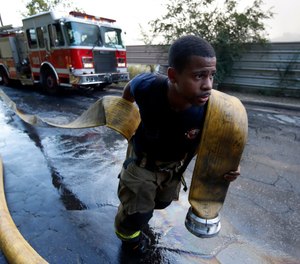
Detailing key changes to the latest grant application process
After a significant delay, the 2019 Assistance to Firefighters Grant (AFG) program application period opened on Feb. 3, and will remain open until March 13.
There are several significant changes to this year’s AFG application, and we are here to help you successfully navigate those modifications.
The first adjustment you will encounter is the fact that the AFG application is no longer available on your FEMA profile. All your previous AFG, Staffing for Adequate Fire & Emergency Response (SAFER) and Fire Prevention & Safety (FP&S) grant applications and awards are still available on your profile; however, the online FY 2019 AFG application is only available at the AFG program’s FEMA Grants Outcomes (GO) application portal .
You can only access the 2019 application after you have registered on FEMA GO. I highly recommend that you register now and not wait until the last minute.
Once you register in FEMA GO, your information should be available across all three FEMA grants, and it should auto-populate in future applications.
For several years I have stressed the importance of having a DUNS number and a valid SAM registration. Starting this year, the applicant organization must provide a valid Dun & Bradstreet Data Universal Numbering System (DUNS) number registered in the System for Award Management (SAM) to apply in FEMA GO system. Instructions for obtaining a DUNS number can be found on grants.gov.
Fast-forward through your successful grant application that results in funding. This is where you may face another adjustment.
After completing the purchase of grant-funded items received in your award, some recipients may have unexpended funds remaining. These excess funds normally result from competitive procurement processes. The AFG excess funds threshold is $10,000.
If you are proposing to use the excess funds to enhance the awarded activities, then no amendment request is necessary. However, if you want to use excess funds for another funding activity or the item you intend to purchase will require an Environmental and Historic Preservation (EHP) review, then an amendment is required.
Some additional notes about this:
Your 2019 AFG application will contain questions concerning your department’s implementation of NFPA 1582: Standard on Comprehensive Occupational Medical Program for Fire Departments physicals. Your answers to these questions are for statistical and data-collection purposes only; answers will not be used by the reviewers to score your application.
For 2019, Micro Grants have now added Wellness and Fitness activities and Modifications to Facilities as eligible categories if the total amount is under $50,000 federal share.
In addition, the definition of Primary First Due Response Area is updated to be consistent with NFPA 1710: Standard for the Organization and Deployment of Fire Suppression Operations, Emergency Medical Operations, and Special Operations to the Public by Career Fire Departments . Per the guidance document, “The geographic area surrounding a fire station in which a company from that station is projected to be the first to arrive on the scene of an incident.”
With some significant changes to this year’s application, I stress the importance of planning your project and reading the Notice of Funding Opportunity (NOFO) . I realize that the NOFO is a long, boring document, but it contains in-depth explanations of all the items I have mentioned above as well as other pertinent information.
I also underscore the need to start as early as possible. Waiting until the last minute to start the process may doom your application due to the additional time related to the changes to this year’s system.
Get started!
Copyright © 2025 FireGrantsHelp.com. All rights reserved.
